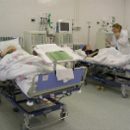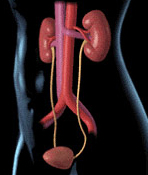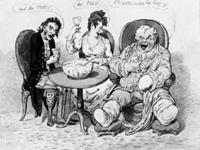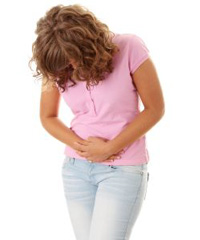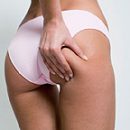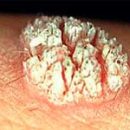Urolithiasis in children can occur under the mask of other diseases, and the attack of urolithiasis sometimes resembles food poisoning or acute appendicitis. What to do when a child's urolithic disease, how to treat a disease?
Content
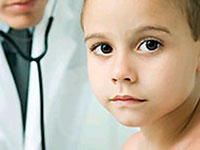 Urolithiasis, nephrolithiasis, urolithiasis — Chronic disease in which stones consisting of organic substances and salts are formed in the urinary system. Disease develops against the background of violations of metabolic processes and inflammation in urinary authorities. Unfortunately, with the need to treat urolithiasis in children, doctors occur not rarely. A cup of illness is detected at the age of 3-10 years in boys, the prevalence of urolithiasis in children is 19-20 cases per 100 thousand. population, among adolescents 80-82 cases, in adults, the disease is detected from 450-460 people among 100 thousand. Examined.
Urolithiasis, nephrolithiasis, urolithiasis — Chronic disease in which stones consisting of organic substances and salts are formed in the urinary system. Disease develops against the background of violations of metabolic processes and inflammation in urinary authorities. Unfortunately, with the need to treat urolithiasis in children, doctors occur not rarely. A cup of illness is detected at the age of 3-10 years in boys, the prevalence of urolithiasis in children is 19-20 cases per 100 thousand. population, among adolescents 80-82 cases, in adults, the disease is detected from 450-460 people among 100 thousand. Examined.
Causes of urolithiasis in children
Among the reasons for the development of urolithiasis in childhood in the first place, violation of the passage of urine, arising from the anomalies of the development of the urinary system. In the presence of obstacles along the path of the outflow, the urine is forced, concentrates that, along with congenital or acquired dysmetabolic nephropathy, leads to crystallization of salts, the formation of precipitation and the formation of concrections. The infection of the urinary tract accelerates the stone formation process, aghesives the clinic and the treatment of urolithiasis in children.
The small frequency of occurrence of urolithiasis among children is explained by the fact that exchange disorders predisposing to the formation of concrections are only beginning to develop at this age and reach a clinically significant level by the time of the child's growing time. In addition, nutritional disorders are less common than among adults, nevertheless parents think than feeding the child, and when urolithiasis, it has a considerable meaning.
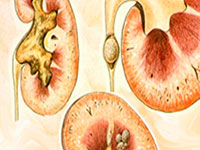 Congenital disorders of metabolism and the stereotype of exchange processes to 6-10 years old are accompanied by an increase in the concentration in the urine of certain salts, of which stones are formed. In children during attacks of urolithiasis, three types of stones are distinguished: oxalate, formed by salts of oxalic acid, urates, consisting of uric acid salts and phosphate — phosphoric acid salts. There are still cysteine stones whose core is the amino acid cysteine.
Congenital disorders of metabolism and the stereotype of exchange processes to 6-10 years old are accompanied by an increase in the concentration in the urine of certain salts, of which stones are formed. In children during attacks of urolithiasis, three types of stones are distinguished: oxalate, formed by salts of oxalic acid, urates, consisting of uric acid salts and phosphate — phosphoric acid salts. There are still cysteine stones whose core is the amino acid cysteine.
Treatment of urolithiasis in children is carried out taking into account the prevalence of oxalate and phosphate stones, ulandists are less common, and cysteine — rarely.
How urolithiasis is manifested in young children?
A feature of the clinic of the urolithiasis of children's age is the absence of typical symptoms of kidney colic.
In kids who are not able to explain that and where they hurt, the attacks of urolithiasis can manifest themselves with common concern, crying, vomiting, bloating, diarrhea, or constipation, increasing body temperature. If the stone quickly goes out, parents take these symptoms for poisoning, and reflect noise about how to treat and what to do under urolithiasis, more often there is a question than feeding. When urolithiasis with stomach pain arises suspicion of acute appendicitis, every fifth child with the ICD is subjected to unreasonable appendectomy and then the treatment of urolithiasis. In small children who have a concrement in the kidney, pain wears a stupid, new, permanent character and intensifies when tapping by lower back in the field of kidney.
In the case of a typical attack of the renal colic, the child complains about pain in the lower back, moving into the genitals and thighs. Along with this, dispersal phenomena, nausea, vomiting, diarrhea, weakness, dizziness, heartbeat appear.
What to do with suspicion of urolithiasis?
 First of all, you need to examine the child. Refer to the children's urologist or surgeon, make ultrasound kidneys, an overview radiograph, if necessary — Excretory contrasting urography. Urine tests and salt allocated, the study of outgoing stones will determine the nature of the violation of metabolic processes, choose competent treatment and adjust the power. The question is how to feed with urolithiasis, not at all idle, for example, with oxalateuria there is no other way to prevent stone formation, as a diet with a limitation of products containing oxalic acid.
First of all, you need to examine the child. Refer to the children's urologist or surgeon, make ultrasound kidneys, an overview radiograph, if necessary — Excretory contrasting urography. Urine tests and salt allocated, the study of outgoing stones will determine the nature of the violation of metabolic processes, choose competent treatment and adjust the power. The question is how to feed with urolithiasis, not at all idle, for example, with oxalateuria there is no other way to prevent stone formation, as a diet with a limitation of products containing oxalic acid.
The physical activity of the child contributes to the discharge of salt crystals. It is necessary to use a large amount of liquid, it «is washed» kidneys and prevents the formation of stones with urolithiasis than feeding the kid depends on the nature of the concreteren.
Conservative ICD therapy includes the use of drugs dissolving salts that buy spasms of ureters and inflammation. Treatment is carried out for a long and scenario, and often the departure of the stone marks the recovery of the child.
What to do with urolithiasis if conservative therapy is ineffective? Today, shock-wave lithotripsy and modern endoorological methods are used to treat children, traditional operations are rarely conducted by certain indications.


